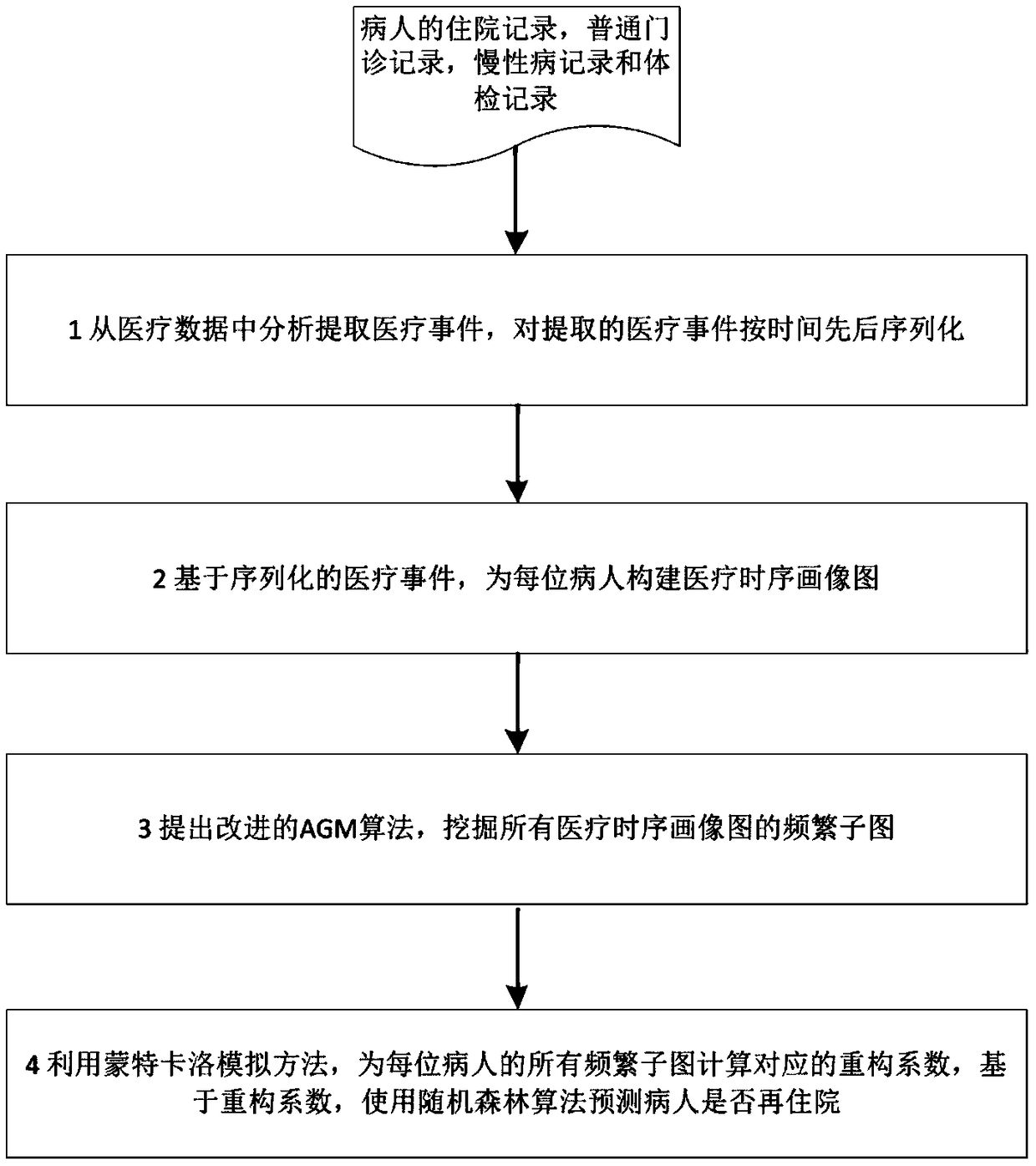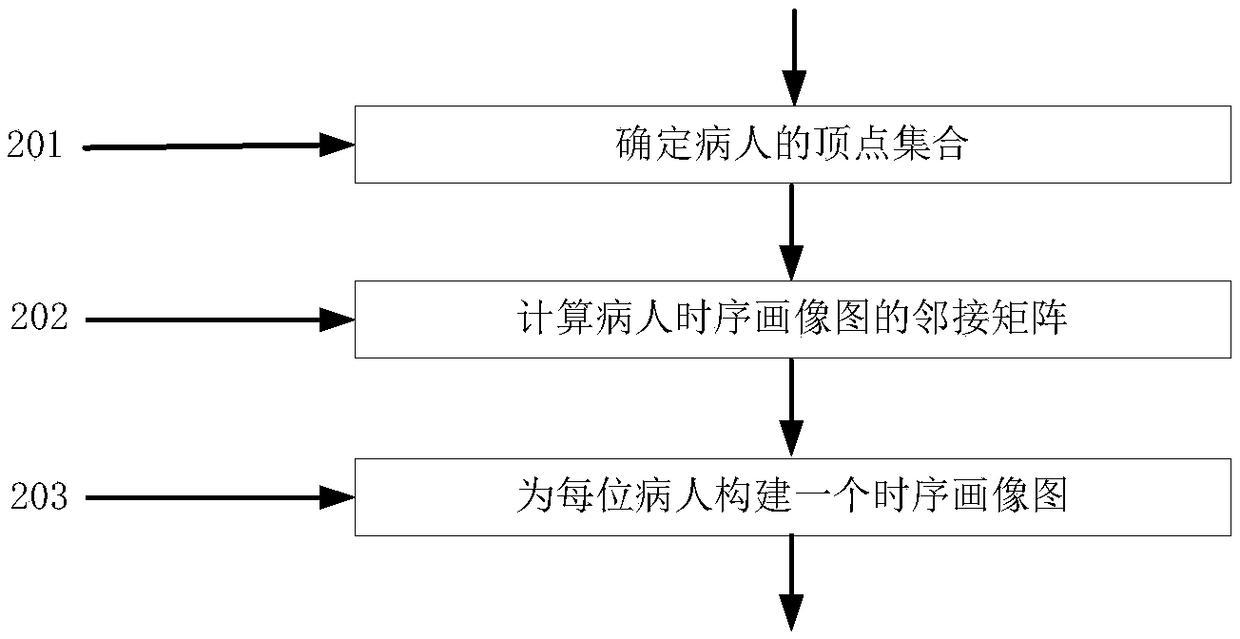Method and system for rehospitalization prediction based on time-series portraits
A time series and portrait technology, which is applied in the field of rehospitalization prediction based on patient medical time series portraits, can solve the problems of losing the benefits of graph representation, detachment, etc., achieve good medical services, solve sparsity problems, and rationally arrange medical resources.
- Summary
- Abstract
- Description
- Claims
- Application Information
AI Technical Summary
Problems solved by technology
Method used
Image
Examples
Embodiment 1
[0088] This embodiment provides a method for predicting rehospitalization based on patient medical time series portraits, such as figure 1 shown, including the following steps:
[0089] Step 1: Analyze and extract medical events from medical data, and serialize the extracted medical events in chronological order;
[0090] Step 2: Based on the serialized medical events, construct a medical sequence portrait for each patient;
[0091] Step 3: Use the improved AGM algorithm to mine the frequent subgraphs of all medical time series portraits;
[0092] Step 4: According to the frequent subgraphs, the Monte Carlo simulation method is used to calculate the corresponding reconstruction coefficients for all frequent subgraphs of each patient, and based on the reconstruction coefficients, the random forest algorithm is used to predict whether the patient will be rehospitalized.
[0093] The step 1, as in figure 2 shown, including:
[0094] Step 101: Analyzing patient data sets, spe...
Embodiment 2
[0148] Based on the second object of the present invention, according to the method for predicting rehospitalization, this embodiment provides a computer device for predicting rehospitalization of patients, including a memory, a processor, and a memory stored on the memory and can be used on the processor. A running computer program, wherein the processor implements the following steps when executing the program, including:
[0149] Step 1: Analyze and extract medical events from medical data, and serialize the extracted medical events in chronological order;
[0150] Step 2: Based on the serialized medical events, construct a medical sequence portrait for each patient;
[0151] Step 3: Use the improved AGM algorithm to mine the frequent subgraphs of all medical time series portraits;
[0152] Step 4: According to the frequent subgraphs, the Monte Carlo simulation method is used to calculate the corresponding reconstruction coefficients for all frequent subgraphs of each pati...
Embodiment 3
[0154] Based on the third object of the present invention, according to the method for rehospitalization prediction, this embodiment provides a computer-readable storage medium on which is stored a computer program for patient rehospitalization prediction, which is characterized in that the program is The following steps are implemented when the processor executes:
[0155] Step 1: Analyze and extract medical events from medical data, and serialize the extracted medical events in chronological order;
[0156] Step 2: Based on the serialized medical events, construct a medical sequence portrait for each patient;
[0157] Step 3: Use the improved AGM algorithm to mine the frequent subgraphs of all medical time series portraits;
[0158] Step 4: According to the frequent subgraphs, the Monte Carlo simulation method is used to calculate the corresponding reconstruction coefficients for all frequent subgraphs of each patient, and based on the reconstruction coefficients, the rando...
PUM
 Login to View More
Login to View More Abstract
Description
Claims
Application Information
 Login to View More
Login to View More - R&D
- Intellectual Property
- Life Sciences
- Materials
- Tech Scout
- Unparalleled Data Quality
- Higher Quality Content
- 60% Fewer Hallucinations
Browse by: Latest US Patents, China's latest patents, Technical Efficacy Thesaurus, Application Domain, Technology Topic, Popular Technical Reports.
© 2025 PatSnap. All rights reserved.Legal|Privacy policy|Modern Slavery Act Transparency Statement|Sitemap|About US| Contact US: help@patsnap.com



